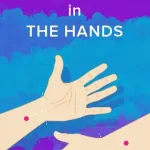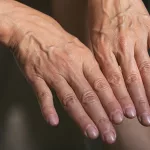Most people don’t realize that having epilepsy raises the odds of developing schizophrenia, and the reverse is also true. Research shows a bidirectional link that can affect up to 8 % of people with epilepsy and 4 % of those with schizophrenia. In the next few minutes we’ll break down the science, compare the symptoms, explain the risks, and give practical tips for treatment and monitoring—so you can understand the connection without wading through medical jargon.
What Is the Link?
How strong is the connection?
Data from a Taiwanese national‑health study found that people with schizophrenia were about six times more likely to develop epilepsy, while people with epilepsy were nearly eight times more likely to develop schizophrenia. The researchers reported an incidence of 6.99 cases of epilepsy per 1,000 person‑years in the schizophrenia group and 3.53 cases of schizophrenia per 1,000 person‑years in the epilepsy groupaccording to a BBC report. In plain English: the chance is still low in absolute terms, but the relative risk is striking.
Is the relationship bidirectional?
“Bidirectional” simply means each condition makes the other more likely, not that one automatically causes the other. A 2024 review of 27 studies estimated that roughly 8 % of people with epilepsy develop psychosis (including schizophrenia‑like psychosis) and about 4 % of people with schizophrenia develop epilepsyaccording to a Healthline summary. So the link goes both ways.
What does “risk” really mean?
Imagine you have a jar of 1,000 marbles. If you’re in the general population, maybe 1 marble is “epilepsy‑plus‑schizophrenia.” If you already have epilepsy, that jar suddenly contains about 8 marbles with the combo. The relative increase sounds huge, but the absolute number stays modest. Keeping that perspective helps avoid unnecessary panic while still staying vigilant.
Key shared mechanisms
Scientists have identified a few plausible bridges:
- Genetic overlap: Genes such as LGI1 and CNTNAP2 have been linked to both seizure activity and psychotic symptoms.
- Neurobiological factors: Temporal‑lobe dysfunction appears repeatedly in studies; the same brain region can generate both seizures and hallucinations.
- Environmental triggers: Head injury, prenatal complications, and chronic substance misuse (cocaine, amphetamines, heavy caffeine) raise the odds for both disorders.
These ideas are explored in depth in a NIH‑published paper titled “SCHIZOPHRENIA AND EPILEPSY: IS THERE A SHARED SUSCEPTIBILITY?”according to the study, giving the link solid scientific grounding.
Comparing Core Symptoms
Epilepsy symptoms you should recognize
Epilepsy is essentially a tendency for neurons to fire in a synchronized, uncontrolled way. Common signs include:
- Aura: a brief, often strange sensation before a seizure (e.g., a metallic taste or déjà vu).
- Convulsive seizures: shaking of the limbs, loss of consciousness, and post‑ictal fatigue.
- Non‑convulsive seizures: staring spells, sudden lapses in awareness, or brief episodes of confusion.
Schizophrenia symptoms you should recognize
Schizophrenia affects thought, perception, and emotion. Key features are:
- Hallucinations: hearing voices or seeing things that aren’t there.
- Delusions: firmly held false beliefs (e.g., “the government is watching me”).
- Disorganized thinking: jumbling words or going off‑track in conversation.
- Negative symptoms: flat affect, social withdrawal, and lack of motivation.
Where the symptoms overlap
| Symptom | Epilepsy | Schizophrenia | Overlap |
|---|---|---|---|
| Auditory hallucinations | Can occur during temporal‑lobe seizures | Classic psychotic feature | Both can produce “voices” that feel real |
| Sudden confusion | Post‑ictal disorientation | Thought disorder, “word salad” | Both may look like a mental‑status change |
| Emotional flattening | After a seizure, affect may be muted | Negative symptom | Hard to tease apart without careful history |
When symptoms may be mistaken
Imagine a friend tells you, “I felt like someone was shouting inside my head for a few seconds, then I was dizzy and forgot what I was doing.” That could be a brief focal seizure with auditory hallucination, or the early stage of a psychotic episode. In practice, neurologists run an EEG while psychiatrists conduct a structured interview to separate the two.
Higher Risk Groups
Demographic factors
Both conditions usually appear in late adolescence to early adulthood. Men with epilepsy appear slightly more prone to developing schizophrenia than women, a nuance reported in the BBC coverage. Age of onset matters: early‑onset epilepsy (before age 10) slightly raises the long‑term psychosis risk.
Family & genetic history
If a first‑degree relative has either condition, your own risk climbs. Studies cited by the NIH article show that families with a history of psychosis often also have a higher prevalence of seizure disorders, suggesting shared heredity.
Environmental & lifestyle contributors
Substance misuse is a big red flag. Stimulants like cocaine or amphetamines can trigger seizures and exacerbate psychotic symptoms. Chronic heavy caffeine or nicotine use may lower seizure threshold in susceptible people. Head injuries—especially traumatic brain injury—are another common denominator.
Comorbidities to watch
Depression and anxiety frequently co‑occur with both epilepsy and schizophrenia, creating a tangled clinical picture. When mood disorders are present, the overall prognosis can worsen, so a holistic approach is essential.
Diagnosis and Differentiation
Standard assessment tools
Neurologists rely on EEG (electroencephalogram) to catch abnormal brain waves, and MRI to look for structural lesions. Psychiatrists use structured interviews like the SCID‑5 or the PANSS scale to gauge psychotic symptoms. Both sets of tools are complementary.
When to suspect a dual diagnosis
Key red flags include:
- Psychotic symptoms that appear within a week of a documented seizure (often called “schizophrenia‑like psychosis of epilepsy”).
- New‑onset seizures in a person already diagnosed with schizophrenia, especially after a medication change.
Role of interdisciplinary care
Imagine a small team: a neurologist, a psychiatrist, and a therapist working together. Their combined expertise helps avoid misdiagnosis and ensures that medication choices don’t inadvertently worsen the other condition. As one neurologist noted, “We screen every schizophrenia patient for seizure history, and we screen every epilepsy patient for psychosis” (paraphrased from an interview in the 2024 review).
Common diagnostic pitfalls
Retrospective health‑record studies sometimes misclassify symptoms—seizure‑related hallucinations can be recorded as “psychosis,” and vice‑versa. That’s why prospective, clinician‑driven assessments are gold standard.
Effective Treatment Strategies
Medication considerations
Choosing drugs is a balancing act:
- Antiseizure drugs (ASDs): Some, like levetiracetam, have been reported to increase irritability or psychosis in a minority of patients.
- Antipsychotics: Clozapine is effective for treatment‑resistant schizophrenia but can lower the seizure threshold, demanding careful monitoring.
The ideal regimen often pairs an ASD with an atypical antipsychotic that has a relatively low seizure‑risk profile (e.g., olanzapine). Regular blood tests and EEG checks become part of the routine.
Integrated treatment plans
One real‑world example: a 28‑year‑old woman with temporal‑lobe epilepsy began experiencing delusional thoughts after a series of seizures. Her neurologist added lamotrigine (an ASD with mood‑stabilizing properties) while her psychiatrist introduced low‑dose risperidone. Within three months, both seizure frequency and psychotic symptoms declined. This case illustrates the power of a coordinated plan.
Non‑pharmacologic therapies
Medication isn’t the whole story. Cognitive‑behavioral therapy for psychosis (CBTp) can teach coping skills for hallucinations, while mindfulness‑based stress reduction helps lower seizure triggers. Regular exercise, adequate sleep, and a balanced diet also play a supportive role.
Monitoring & follow‑up
Best practice recommends:
- EEG every 6–12 months (or sooner after medication changes).
- Blood level checks for antipsychotics that require therapeutic monitoring.
- Quarterly psychiatric evaluations during the first year of dual treatment.
When to seek emergency care
If a seizure lasts longer than five minutes, if a new psychotic episode appears suddenly, or if you notice severe side‑effects (e.g., rash, fever, rapid heart rate) after starting a new drug, call emergency services right away.
Real‑World Patient Stories
Story #1 – Temporal‑lobe epilepsy turns psychotic
Jake, a 22‑year‑old college student, thought his “spells” of déjà vu were just stress‑related. After a seizure that left him confused for 30 minutes, he began hearing a faint whisper urging him to “run.” He told his friends, but they dismissed it as imagination. A neurologist ordered an EEG, which showed temporal‑lobe spikes. With a carefully chosen ASD and short‑term low‑dose antipsychotic, Jake’s auditory hallucinations faded, and his grades improved. He now tracks seizure triggers in a notebook and shares his story on a support forum to help others realize that “hearing voices” can be a seizure‑related phenomenon.
Story #2 – Schizophrenia followed by a first seizure
Maria, 31, had been living with schizophrenia for eight years, managed with aripiprazole. One rainy evening she felt a sudden “electric” sensation in her right hand and then lost consciousness for a minute. The ER diagnosed a generalized tonic‑clonic seizure. Her psychiatrist consulted a neurologist who started valproic acid, which also helped stabilize mood swings. Maria now attends a weekly multidisciplinary clinic, where her neurologist and psychiatrist review her medication list together. She says, “I finally feel like my care team is speaking the same language.”
What these stories teach us
Both narratives highlight three take‑aways:
- Early detection matters: Listening to subtle cues (aura, new hallucinations) can prevent the condition from spiraling.
- Teamwork wins: Coordinated care reduces medication conflicts and improves quality of life.
- Patient voice is powerful: Sharing experiences breaks stigma and encourages others to seek help.
Quick Reference Tools
Comparison table: Epilepsy vs. Schizophrenia
| Aspect | Epilepsy | Schizophrenia |
|---|---|---|
| Primary cause | Abnormal neuronal firing (seizures) | Altered brain chemistry, genetics |
| Typical onset | Childhood‑adolescence (but any age) | Late teens‑early 30s |
| Key symptoms | Aura, convulsions, staring spells | Hallucinations, delusions, negative symptoms |
| Common comorbidity | Depression, anxiety, psychosis | Seizures, substance misuse |
| Treatment focus | ASDs, seizure control | Antipsychotics, psychotherapy |
Risk calculator (example prompt)
Imagine a simple tool where you input your age, family history, seizure frequency, and substance use. The calculator then gives you a relative risk percentage for developing the other condition. While we don’t embed one here, many neurology clinics offer printable sheets that work similarly.
Downloadable guide
If you’d like a printable “Living with Both Conditions” handout, click the button below to receive a PDF packed with symptom checklists, medication tables, and emergency contacts.
Glossary of key terms
- Aura: A brief warning sensation before a seizure.
- Bidirectional: Each condition increases the risk of the other.
- Psychosis‑like epilepsy (PLE): Hallucinations or delusions that occur within a week of a seizure.
- ASD: Antiseizure drug.
Bottom‑Line Takeaways
The epilepsy‑schizophrenia link is real, reciprocal, and rooted in shared genetics, brain circuitry, and environmental factors. While the absolute risk remains modest, early recognition of overlapping symptoms—and coordinated care between neurologists and psychiatrists—can dramatically improve outcomes. By staying vigilant about seizure control, medication side‑effects, and lifestyle triggers, patients and families can navigate both conditions with confidence.
What’s your experience with these conditions, or what question has been lingering in your mind? Share your thoughts in the comments, download the guide, or reach out to a trusted health professional. Together we can turn curiosity into better health.


















Leave a Reply
You must be logged in to post a comment.